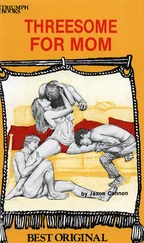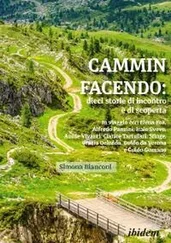Simon Foster - CHINA's Three Gorges & Xi'an
Здесь есть возможность читать онлайн «Simon Foster - CHINA's Three Gorges & Xi'an» весь текст электронной книги совершенно бесплатно (целиком полную версию без сокращений). В некоторых случаях можно слушать аудио, скачать через торрент в формате fb2 и присутствует краткое содержание. Год выпуска: 2010, Издательство: Hunter, Жанр: Старинная литература, на английском языке. Описание произведения, (предисловие) а так же отзывы посетителей доступны на портале библиотеки ЛибКат.
- Название:CHINA's Three Gorges & Xi'an
- Автор:
- Издательство:Hunter
- Жанр:
- Год:2010
- ISBN:нет данных
- Рейтинг книги:4 / 5. Голосов: 1
-
Избранное:Добавить в избранное
- Отзывы:
-
Ваша оценка:
- 80
- 1
- 2
- 3
- 4
- 5
CHINA's Three Gorges & Xi'an: краткое содержание, описание и аннотация
Предлагаем к чтению аннотацию, описание, краткое содержание или предисловие (зависит от того, что написал сам автор книги «CHINA's Three Gorges & Xi'an»). Если вы не нашли необходимую информацию о книге — напишите в комментариях, мы постараемся отыскать её.
CHINA's Three Gorges & Xi'an — читать онлайн бесплатно полную книгу (весь текст) целиком
Ниже представлен текст книги, разбитый по страницам. Система сохранения места последней прочитанной страницы, позволяет с удобством читать онлайн бесплатно книгу «CHINA's Three Gorges & Xi'an», без необходимости каждый раз заново искать на чём Вы остановились. Поставьте закладку, и сможете в любой момент перейти на страницу, на которой закончили чтение.
Интервал:
Закладка:
Food is so cheap in China that cooking for yourself is rarely worthwhile as a traveler, but if you are here for longer, want a change or would like to stock up for a long journey, markets are packed with choices as well as great places to check out local life. Not so long ago, local produce would be all that was available, but these days you'll find tropical fruitfor sale in Beijing's markets, even in winter.
Western Food
While China is a culinary adventure, every now and then Western food can bring a welcome shot of familiarity; just don't expect it to be exactly the way it is back home. Dairy productsused to be very difficult to track down (outside of western and northwestern China), but in this time of the single child policy all parents want their kid to grow up big and strong, and calcium, hence milk, cheese and yogurt, are increasingly available, although you may still struggle in smaller towns and rural areas. Breakfastis a meal where many foreigners find Chinese food the hardest to stomach; congee (rice porridge) or noodles just don't cut it for everyone at 7 am and, though mid-range hotels may have some kind of Western fare included in their breakfast spread, the orange juice is likely to be warmed and toast and eggs may be the best you get. International chain hotels tend to offer a far better spread. For those on a budget, help is at hand in the form of a common Chinese dish that makes for an excellent Western-style breakfast – scrambled eggs and tomato ( xihongshi chaodan ).
Fast Food
When you need a Western fix, China has an ever-increasing array of options, the dominant flagships of which are predictably KFC, McDonaldsand Pizza Hut, although there are domestic burger chains too, notably Dicos. Coffee shops like Coffee Language, UBC Coffeeand Starbucksare also a recent phenomenon sweeping the cities, and, in addition to a good choice of drinks, they often serve reasonable Western fare such as pizzas, sandwiches and steaks. Similar items can be found at backpacker cafés(notably in Yangshuo in Guangxi) and Western-style pubsthat have emerged in the bigger cities. Larger hotel restaurants may also have some Western options on their menus.
Vegetarian Options
Being a vegetarian in China sounds easy enough, given the sheer number of vegetable dishesin the country's cuisine and its Buddhist history, along with the imitation meat dishes made from tofupopularized since the Qing dynasty. However, it really depends on how strict you are in your definition of vegetarian, since many of these vegetable dishes will have involved meat somewhere along the way, be it in the sauce, the fat, or the small pieces of pork or shrimp you find in your "fried cabbage”! Telling your waiter that you don't eat meat (" wo bu chi rou ”) might help, but, to be clearer, say you're a Buddhist (" wo shi fojiao tu ”), who generally abstain from meat. Aside from the small number of purely vegetarian and Indian restaurants found in the biggest cities, the only way to be certain is to eat at one of the Buddhist dining hallsin temples and monasteries throughout the country, although the food can be a little bland due to the lack of garlic, ginger and onion, which are considered too "stimulating.”
A Chinese Banquet
In a country so overpopulated, the availability of food is something to be celebrated and the Chinese banquet is the focal point for this. If you come on business you'll almost certainly enjoy at least one of these lavish displays of wealth, which often involve the host paying weeks in advance to prevent anyone else trying to do so on the night of the event. Expect lots of extravagant dishes, lots of toastsand as much noise as possible. Indeed the Chinese word for "having a good time,” renao , literally means hot and noisy, something all banquets worth their salt should emulate.
Ordering Food
Unfortunately, accessing China's cornucopia of foods isn't always straightforward, principally because of the language barrier. Thus, many travelers leave with less than the full picture after a trip overrun with dumplings, noodles and stir fries. However, there are several ways to combat this and ensure you get the most from your chopsticks.
Go to restaurants with an English menu– this is an easy way to start, although be aware that the English menu will probably have only a fraction of the dishes the kitchen can actually prepare, those that they think will appeal to foreigners, which are often blander or less exotic in their ingredients.
If there isn't an English menu, start with the language sectionat the end of this book, which gives both the pinyin and the Chinese characters for all the phrases and dishes listed in this section, along with many more. When ordering, bear in mind they're more likely to have dishes from the region which you're in ( keyi jieshao yidao cai ma literally "can you introduce a dish?” is always a good question to ask).
Have a look around– seeing what other folks are eating and pointing at whatever you like the look of should do the trick. Similarly, the staff may invite you back into the kitchen (or the raw produce may be on display), in which case, pointing should once again get across your meaning and you can use the language section to explain how you would like it cooked.
Try to order a balance of foodsfor your group – one or two meat dishes, one fish and one or two vegetable or tofu dishes along with rice or noodles for a group of six to eight should suffice. This is the way Chinese food is designed to be eaten, offering contrasting flavors and textures, and it also means you're sure to find something you like.
If the above sounds like a culinary disaster waiting to happen, you could go on an organized group tour– if you're on a tour chances are you'll have a guide or tour leader familiar with both the language and the cuisine and who can pick the best regional specialties for you. Some companies even organize culinary tours (see Specialized Tours ).
A few other points are worth noting:
Dishes will usually serve at least two when eaten with rice, although some places offer small and large plates.
If a meat dish doesn't specify, it will be pork, the staple meat of the country.
Rice tends to be served at the end of the meal (only to be used as a filler once the best dishes are consumed), unless you specify you want it at the same time as the meal itself.
The flavor enhancer, MSG(monosodium glutamate), is heavily used in much of the food – indeed sometimes you are given extra should you wish to put it in! MSG can cause headaches and more serious health problems and is best avoided, especially as the food is tasty enough already. Say " wo bu yao weijing ,” (I don't want MSG) when ordering.
Drinks
It's important to make sure you consume enough fluidswhile on the road, especially during the summer months, and China offers a host of ways to quench your thirst, be it a refreshing cup of jasmine teaor a nice cold Tsingtao beerafter a hard day sightseeing. You should never drink the tap water, but bottled mineral wateris readily and inexpensively available throughout the country ($1-2 for a small bottle, or $3-4 at tourist sights), while hotel rooms and trains will always have a supply of safe boiled water. Soft drinks are also popular and you'll find all the familiar brands along with a few of China's own such as Jianlibao, which is worth a try. You'll also find fresh fruit juices, especially in the south.
Читать дальшеИнтервал:
Закладка:
Похожие книги на «CHINA's Three Gorges & Xi'an»
Представляем Вашему вниманию похожие книги на «CHINA's Three Gorges & Xi'an» списком для выбора. Мы отобрали схожую по названию и смыслу литературу в надежде предоставить читателям больше вариантов отыскать новые, интересные, ещё непрочитанные произведения.
Обсуждение, отзывы о книге «CHINA's Three Gorges & Xi'an» и просто собственные мнения читателей. Оставьте ваши комментарии, напишите, что Вы думаете о произведении, его смысле или главных героях. Укажите что конкретно понравилось, а что нет, и почему Вы так считаете.












